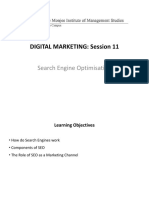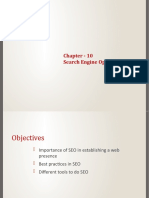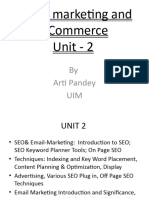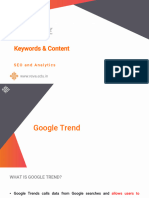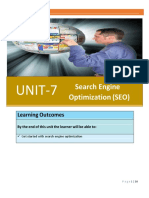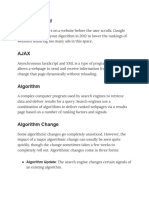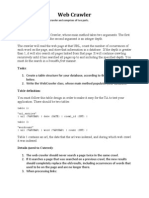0% found this document useful (0 votes)
5 views11 pagesSEO Notes
The document outlines various Google algorithms that have been implemented to improve search result quality, including Panda, Penguin, Hummingbird, Rankbrain, and the Page Experience update. It also details essential concepts in SEO such as keyword research, on-page and off-page SEO strategies, and technical SEO factors, emphasizing the importance of backlinks and website authority. Additionally, it provides a comprehensive checklist for optimizing web pages and improving overall site performance.
Uploaded by
Rap Ka KeedaCopyright
© © All Rights Reserved
We take content rights seriously. If you suspect this is your content, claim it here.
Available Formats
Download as DOCX, PDF, TXT or read online on Scribd
0% found this document useful (0 votes)
5 views11 pagesSEO Notes
The document outlines various Google algorithms that have been implemented to improve search result quality, including Panda, Penguin, Hummingbird, Rankbrain, and the Page Experience update. It also details essential concepts in SEO such as keyword research, on-page and off-page SEO strategies, and technical SEO factors, emphasizing the importance of backlinks and website authority. Additionally, it provides a comprehensive checklist for optimizing web pages and improving overall site performance.
Uploaded by
Rap Ka KeedaCopyright
© © All Rights Reserved
We take content rights seriously. If you suspect this is your content, claim it here.
Available Formats
Download as DOCX, PDF, TXT or read online on Scribd
/ 11














